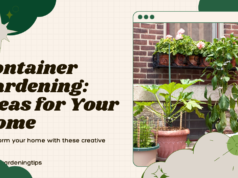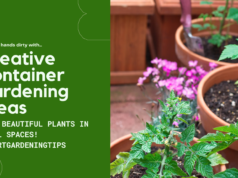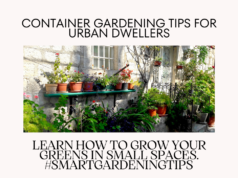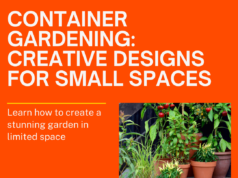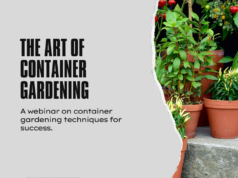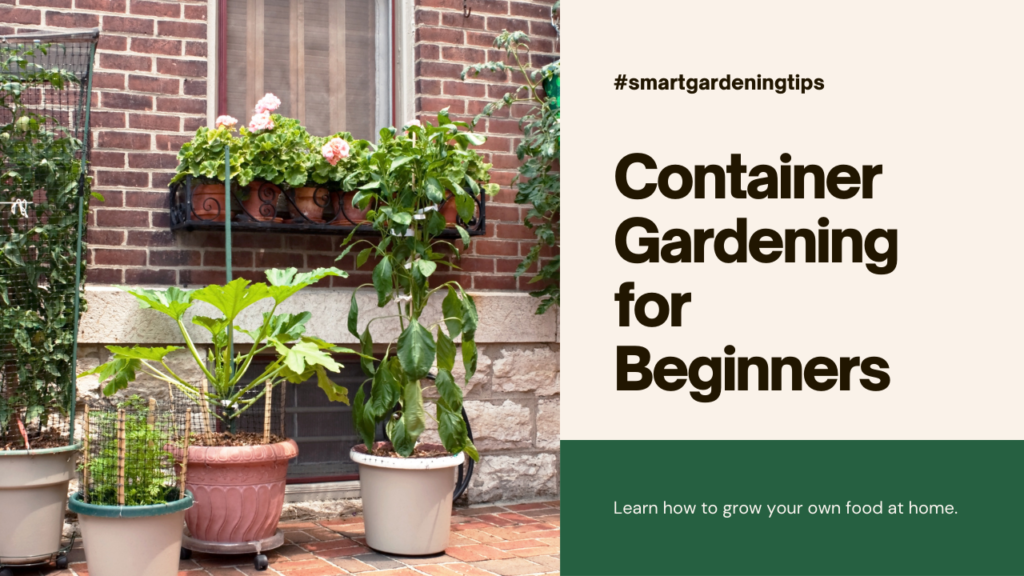
Welcome to the world of container gardening! If you have limited space or are new to gardening, container gardening is a fantastic way to enjoy the beauty and rewards of growing plants. Whether you have a small balcony, a sunny window sill, or a tiny backyard, container gardening allows you to create your own oasis of greenery.
Container gardening involves growing plants in pots or containers instead of traditional garden beds. It offers numerous benefits, especially for beginners like you. Not only does it require less space, but it also allows for better control over soil conditions, watering, and plant care. With container gardening, you can enjoy fresh vegetables, aromatic herbs, and stunning flowers right at your fingertips.
Key Takeaways:
- Container gardening is a great option for beginners with limited space.
- It provides better control over soil conditions and watering.
- You can grow a variety of plants, including vegetables, herbs, and flowers.
- Container gardening allows you to create your own green oasis wherever you live.
- With container gardening, you can enjoy the beauty and rewards of growing plants.
Benefits of container gardening
Container gardening offers numerous benefits, making it an ideal choice for beginners looking to embark on their gardening journey. Whether you have limited space, a desire for versatility, or simply want to add some greenery to your surroundings, container gardening has something to offer everyone.
1. Versatility
Container gardening allows you to grow a wide variety of plants, regardless of the space available to you. From vibrant flowers to fresh vegetables and aromatic herbs, you can create a diverse and visually appealing garden with containers. Whether you have a sprawling backyard or a small apartment balcony, containers can be placed anywhere, making it a versatile option for garden enthusiasts.
2. Accessibility
One of the biggest advantages of container gardening is its accessibility. Unlike traditional gardening, container gardening requires minimal bending and kneeling, making it an excellent choice for individuals with physical limitations. The portability of containers also allows for easy maintenance, allowing you to move plants around to optimize sunlight exposure and protect them from adverse weather conditions.
3. Space-saving
Container gardening is perfect for those who have limited space. Whether you live in an apartment or have a small backyard, containers can be stacked, hung, or placed strategically to maximize your gardening area. Vertical gardening techniques, such as using trellises or hanging baskets, enable you to grow more plants without taking up valuable floor space.
Additionally, container gardening also provides the opportunity to grow plants indoors, bringing nature into your home and brightening up your living space.
“Container gardening is a fantastic way for beginners to experience the joy of gardening without the need for a large outdoor space. It offers flexibility, accessibility, and the chance to explore your creativity in a contained environment.” – Mary Smith, experienced gardener
With the benefits of versatility, accessibility, and space-saving features, container gardening is an excellent choice for beginners looking to enjoy the beauty and satisfaction of cultivating their own plants.
Essential tools and materials for container gardening
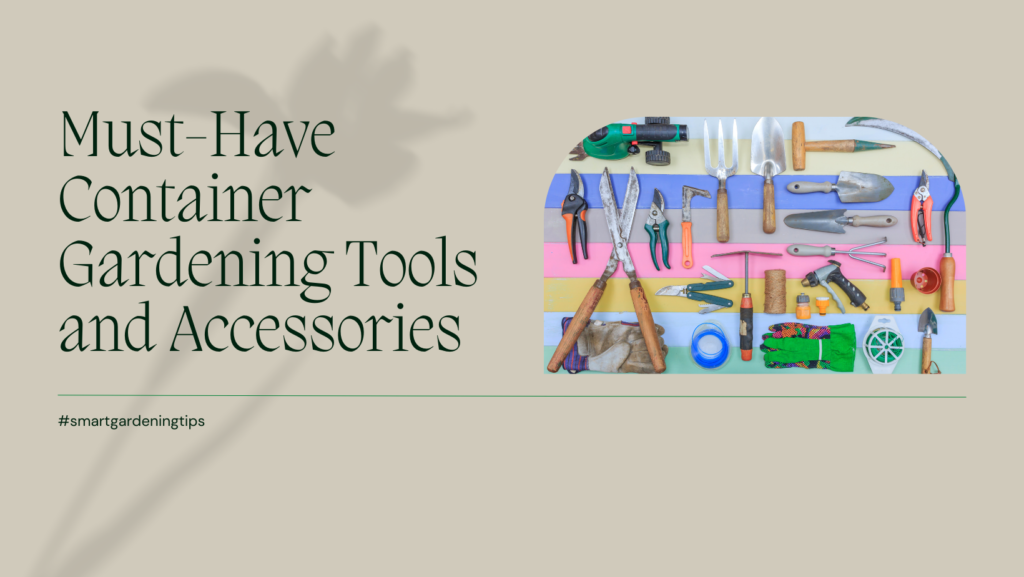
Starting your container garden requires a few essential tools and materials that will help you create a thriving and beautiful oasis right at your fingertips. Whether you’re a beginner or a seasoned gardener, having the right supplies is crucial for the success of your plants. Here are some key items you’ll need to get started:
Pots and containers
Your choice of pots and containers is essential for container gardening. Look for containers that have adequate drainage holes to prevent waterlogging and ensure healthy plant growth. Consider the size and material of the containers based on the plants you want to grow. For example, larger plants like tomatoes may require deeper pots, while herbs can thrive in smaller containers.
Soil and potting mix
The type of soil you use is vital for the health and productivity of your container garden. Opt for a high-quality potting mix that is lightweight, well-draining, and nutrient-rich. Avoid using garden soil, as it can be too dense and compact for containers. Look for a potting mix specifically formulated for container gardening, as it will provide the ideal growing conditions for your plants.
Watering cans or hoses
Watering your container garden regularly is essential to keep your plants hydrated and thriving. Invest in a watering can or hose with a spray nozzle to efficiently water your plants. Consider the size of your garden and the needs of your plants when choosing your watering equipment. Remember to water your plants evenly and avoid overwatering, as it can lead to root rot and other issues.
Gardening gloves and tools
Protecting your hands while tending to your container garden is important, especially when handling soil and plants. Invest in a pair of sturdy gardening gloves that provide protection from dirt, thorns, and sharp tools. Additionally, having a set of essential gardening tools like a trowel, pruners, and a hand fork can make gardening tasks easier and more efficient.
Fertilizers and plant food
While a nutrient-rich potting mix provides a good base, your container plants may still benefit from additional fertilizers and plant food. Choose a balanced fertilizer specifically designed for container plants and follow the recommended dosage instructions. Regularly feeding your plants with the right nutrients will promote healthy growth, abundant blooms, and bountiful harvests.
Choosing the right containers and soil
When it comes to container gardening, choosing the right containers and soil is essential for the success of your plants. The right containers and soil not only provide a suitable environment for your plants to thrive but also ensure proper drainage and nutrient retention.
Selecting Suitable Containers
When selecting containers, consider the size, material, and drainage capabilities. Different plants have different space requirements, so choose containers that are appropriate for their size at maturity. For example, small herbs like basil or thyme can flourish in smaller pots, while larger vegetables like tomatoes or peppers need larger containers.
Materials like plastic, terracotta, or ceramic can all be suitable for container gardening, but each has its advantages and considerations. Plastic containers are lightweight and easy to move, but they may not provide the best insulation. Terracotta and ceramic containers are more porous, allowing for better airflow to the roots, but they can be heavier and prone to cracking in extreme temperatures.
Remember to choose containers with drainage holes to prevent waterlogging, as excessive moisture can lead to root rot and other plant diseases.
Understanding the Importance of Quality Soil Mixtures
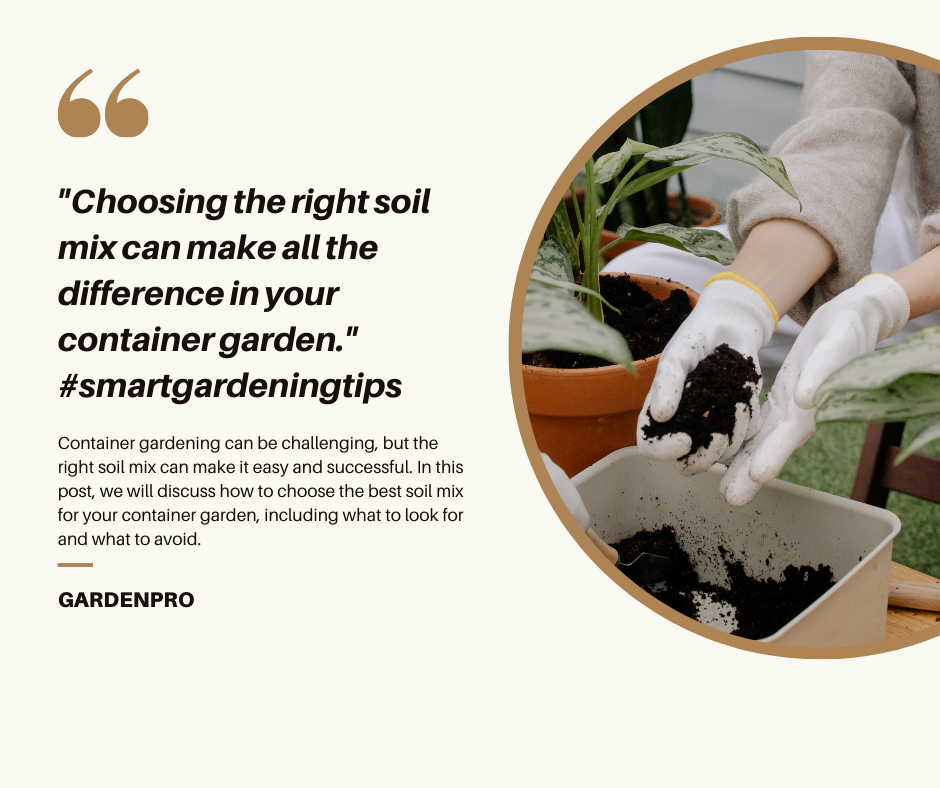
The soil you use in your containers plays a crucial role in the growth and development of your plants. High-quality soil mixtures provide the necessary nutrients, retain moisture, and promote root development.
When it comes to soil mixtures, consider using a combination of potting soil, compost, and organic matter. Potting soil provides a well-draining base, while compost and organic matter enrich the soil with nutrients and help retain moisture.
It’s important to use a soil mixture specifically formulated for containers, as garden soil may contain pests, weed seeds, or drainage issues that can hinder plant growth.
Here’s a simple recipe for a quality soil mixture:
| Ingredient | Quantity |
|---|---|
| Potting soil | 2 parts |
| Compost | 1 part |
| Organic matter (e.g., coconut coir, peat moss) | 1 part |
This mixture provides a balanced blend of nutrients, drainage, and moisture-holding capacity for your container plants. Remember to water your containers regularly and adjust the watering frequency based on the specific needs of your plants.
Choosing the right containers and using quality soil mixtures sets the foundation for healthy and thriving plants in your container garden. Now that you know how to select suitable containers and prep the perfect soil mixture, you’re ready to move on to the next step: selecting the right plants for your container garden!
Selecting plants for your container garden
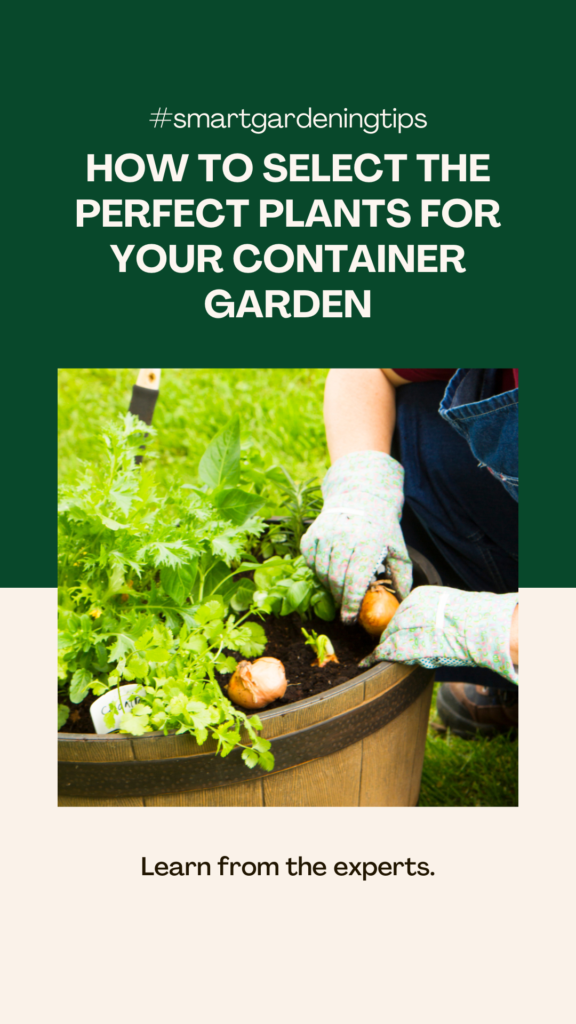
When it comes to selecting plants for your container garden, you have a wide range of options to choose from. Whether you’re a beginner or an experienced gardener, it’s important to choose plants that thrive in containers and require minimal maintenance. In this section, we’ll explore popular vegetables and herbs for beginners, as well as low-maintenance flowers and foliage options. Let’s dive in and discover the perfect plants for your container garden.
Popular Vegetables and Herbs for Beginners
If you’re new to container gardening, starting with vegetables and herbs is a great way to get started. Not only do they provide you with fresh and flavorful produce, but they are also relatively easy to grow in containers. Here are some popular choices for beginners:
- Tomatoes: Choose compact varieties like cherry tomatoes or determinate types that don’t require as much space.
- Peppers: Bell peppers and chili peppers grow well in containers and add a spicy kick to your dishes.
- Herbs: Basil, mint, parsley, and rosemary are perfect for container gardening, giving you fresh flavors for cooking.
- Salad Greens: Lettuce, spinach, and kale are fast-growing greens that thrive in containers and provide a constant supply of fresh salad ingredients.
Low-Maintenance Flowers and Foliage Options
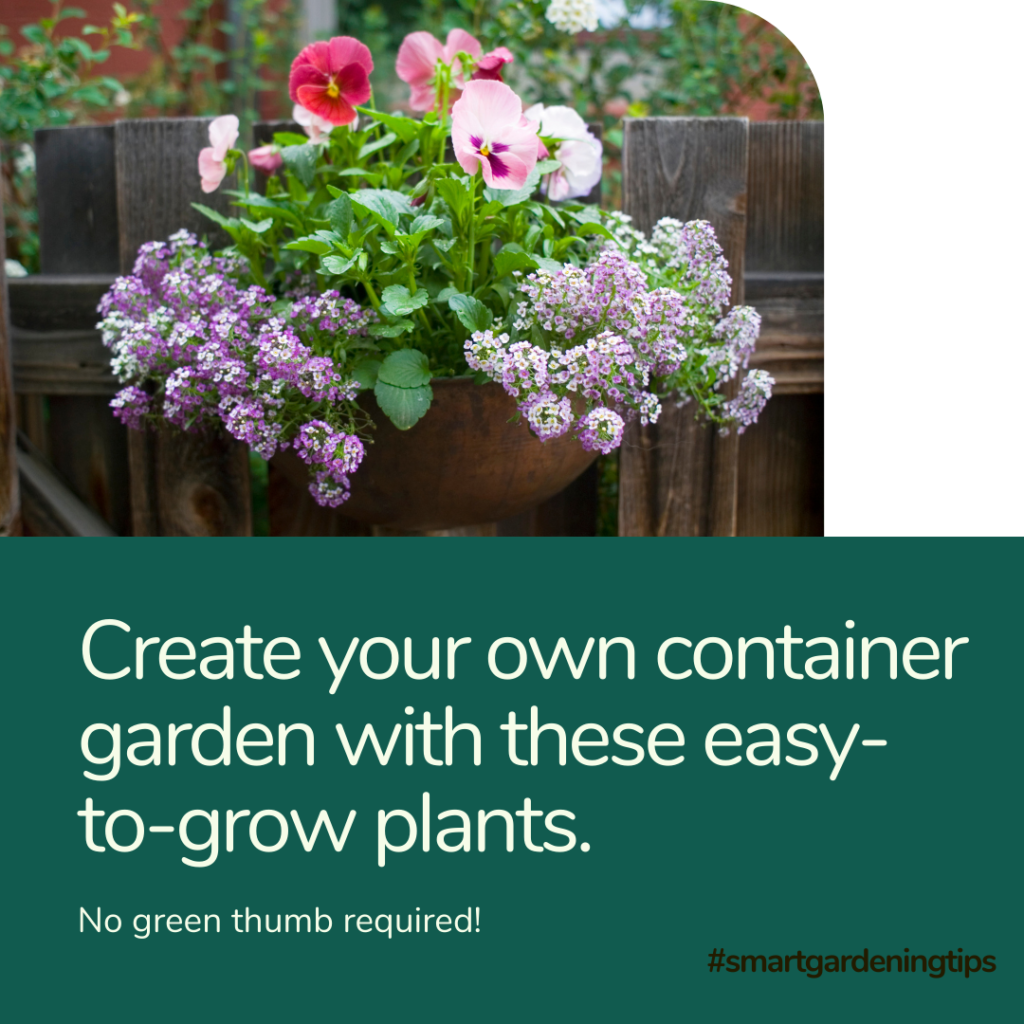
If you’re looking to add color and beauty to your container garden without too much effort, low-maintenance flowers and foliage plants are the way to go. These plants require less water, fertilizer, and pruning compared to their high-maintenance counterparts. Here are some options to consider:
- Petunias: These vibrant flowers come in various colors and require minimal care, making them a popular choice for beginners.
- Geraniums: Known for their beautiful blooms, geraniums are drought-tolerant and can add a splash of color to your container garden.
- Succulents: With their unique shapes and textures, succulents are perfect for low-maintenance container gardens. They require infrequent watering and can thrive in sunny locations.
- Ornamental Grasses: These plants add texture and movement to your container garden, requiring minimal care throughout the season.
Remember to consider the specific growing conditions of your container garden, such as sunlight exposure and watering needs, when selecting your plants. By choosing the right plants for your container garden, you’ll create a thriving and visually appealing space with minimal effort.
Now that you have an idea of the plants suitable for container gardening, let’s move on to the next section where we’ll discuss essential care and maintenance practices to ensure the success of your container garden.
| Plant | Care Level | Light Requirements | Watering Needs |
|---|---|---|---|
| Tomatoes | Easy | Full sun | Regular |
| Peppers | Easy | Full sun | Moderate |
| Basil | Easy | Full sun | Regular |
| Petunias | Easy | Full sun to partial shade | Moderate |
| Succulents | Easy | Full sun to partial shade | Low |
Table: Care requirements of selected plants for container gardening
Container gardening care and maintenance
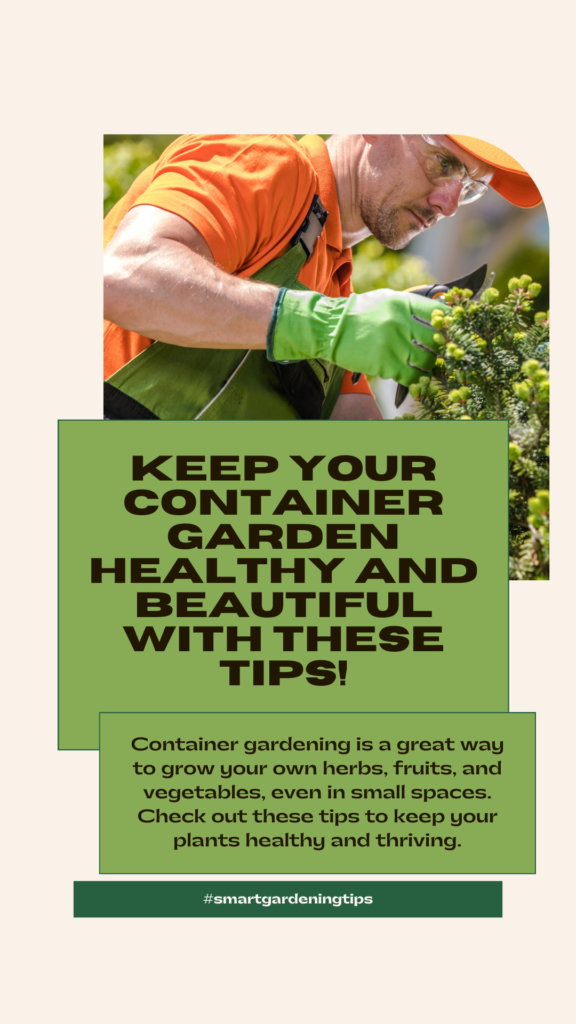
Proper care and maintenance are vital for the success of your container plants. By following these watering and fertilizing tips and taking steps to prevent pests and diseases, you can ensure the health and longevity of your plants.
Watering techniques
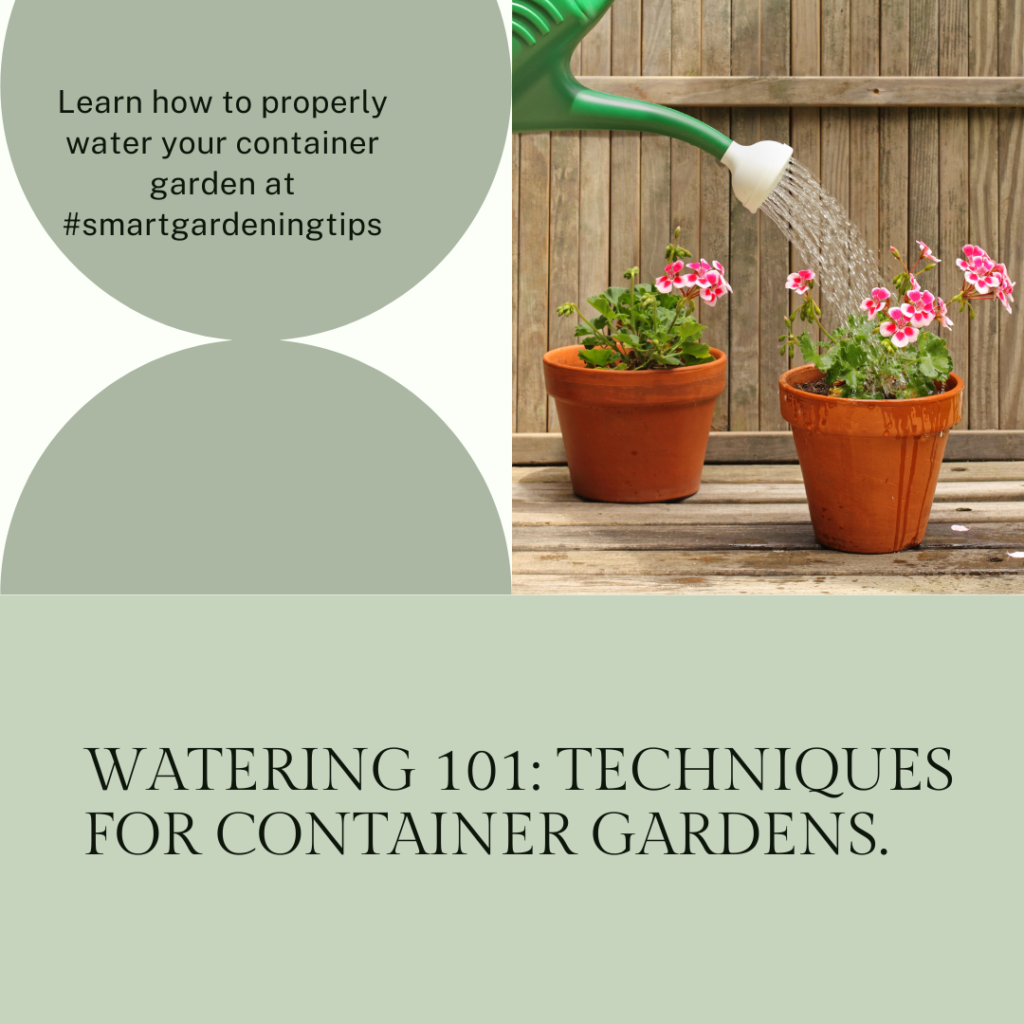
Watering plays a crucial role in container gardening, as potted plants can dry out more quickly than those in the ground. Here are some watering tips to keep in mind:
- Check the moisture level of the soil regularly. Insert your finger about an inch deep into the soil, and if it feels dry, it’s time to water.
- Water your plants thoroughly but avoid overwatering, as this can lead to root rot. Ensure that excess water can drain out of the pots by providing drainage holes or using container saucers.
- Water in the morning or evening when temperatures are cooler to reduce evaporation.
- Use a watering can or a gentle spray attachment on your hose to provide a slow and steady flow of water to prevent soil erosion.
Fertilization tips
Container plants rely on regular fertilization to receive essential nutrients for healthy growth. Here are some tips to effectively fertilize your container garden:
- Choose a balanced, slow-release fertilizer specifically formulated for container plants. Follow the instructions on the packaging for the appropriate amount to use.
- Apply fertilizer every four to six weeks during the growing season to ensure a steady supply of nutrients.
- Avoid overfertilizing, as excessive nutrients can burn the roots of your plants. Always follow the recommended dosage.
- Consider using organic fertilizers, such as compost or worm castings, for a natural and environmentally friendly alternative.
Preventing pests and diseases
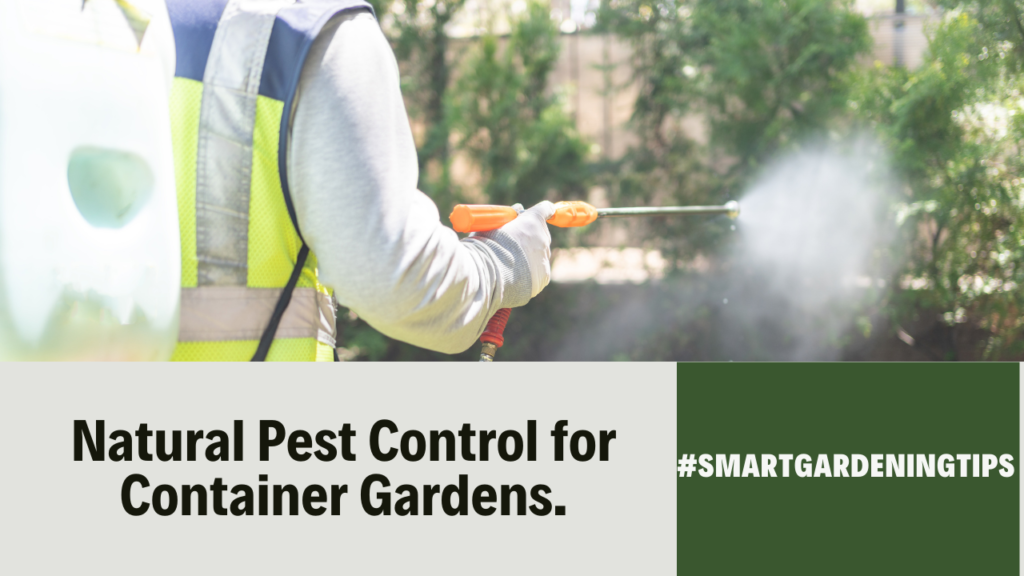
Container plants are susceptible to pests and diseases, but with proper prevention strategies, you can keep your plants healthy and thriving:
- Regularly inspect your plants for signs of pests, such as chewed leaves, holes, or sticky residue. Remove any affected leaves or plants to prevent further infestation.
- Encourage natural predators, like ladybugs or lacewings, to control pest populations in your garden.
- Avoid overcrowding your containers, as it can create a favorable environment for pests and diseases. Allow adequate spacing between plants to promote air circulation.
- Practice good sanitation by removing fallen leaves or debris around your containers, as they can harbor pests and diseases.
By following these watering and fertilizing tips and taking preventative measures against pests and diseases, you can maintain healthy and thriving container plants that will beautify your space and bring you joy.
Creative container gardening ideas
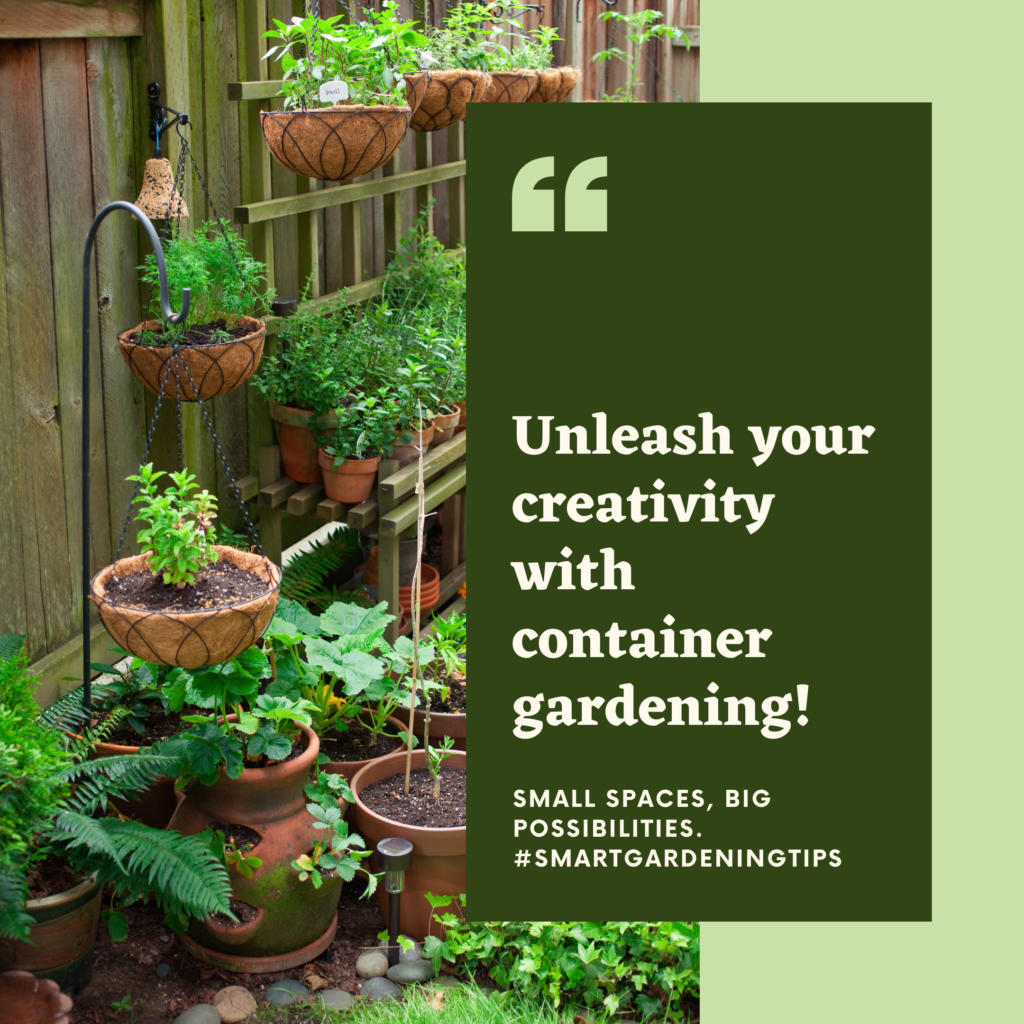
Are you looking to take your container gardening to the next level? Get inspired with these creative ideas that will add a unique touch to your garden. From vertical gardening techniques to theme-based designs, there’s something for everyone.
Vertical Gardening in Containers
Vertical gardening allows you to maximize space and create visual interest in your container garden. Here are a few ideas to get you started:
- Consider using trellises or stakes to support climbing plants like tomatoes, cucumbers, or beans. This not only saves space but also adds height and dimension to your garden.
- Hang planters or baskets vertically on walls or fences to create a living wall of greenery.
- Try using a vertical tower planter that allows you to grow multiple plants in a compact space.
With vertical gardening, you can transform a small balcony or patio into a lush oasis.
Theme-Based Container Garden Designs
Give your container garden a cohesive and curated look by designing it around a specific theme. Here are a few theme-based ideas:
- Create a culinary herb garden by planting a variety of herbs like basil, thyme, and mint. Not only will it add a fragrant aroma to your space, but you’ll also have fresh herbs on hand for cooking.
- Design a butterfly or pollinator garden by selecting flowers that attract bees, butterflies, and hummingbirds. Opt for bright and colorful blooms like butterfly bush, zinnias, and coneflowers.
- Embrace a tropical theme by planting exotic plants like palms, ferns, and orchids. Add decorative elements like colorful pots and statues to complete the look.
Theme-based container gardens allow you to express your creativity and create a visually stunning display.
“Vertical gardening and theme-based designs are excellent ways to elevate your container gardening experience. These ideas not only save space but also add character and charm to your outdoor space.” – Jane Doe, Container Gardening Enthusiast
Get creative with your container gardening and let your imagination run wild. Whether you choose to go vertical or design around a specific theme, you’ll create a unique and beautiful garden that will be the envy of all.
FAQ
Q. What are the benefits of container gardening?
A. Container gardening offers several advantages for beginners. It allows you to have a garden in limited spaces, such as balconies or patios. It also provides better control over soil quality and watering, and it can be a great way to start gardening without the need for a large outdoor plot.
Q. What are the essential tools and materials needed for container gardening?
A. To begin container gardening, you will need some basic tools and materials. Some essential items include pots or containers of various sizes, quality soil mixtures, gardening gloves, watering cans or hoses, and small gardening tools like trowels and pruning shears.
Q. How do I choose the right containers and soil for my plants?
A. When selecting containers, consider the size and type of plants you want to grow. Ensure that the containers have drainage holes to prevent waterlogging. Additionally, choose pots made of durable materials like plastic or ceramic. As for soil, opt for pre-packaged high-quality potting mixes or create your own by mixing peat moss, perlite, and compost in proper proportions.
Q. What plants are suitable for container gardening?
A. There are various plants suitable for container gardening. For beginners, popular options include tomatoes, lettuce, herbs like basil and mint, and flowers like marigolds and petunias. You can also choose low-maintenance plants like succulents or ferns if you prefer foliage over blooms.
Q. How do I care for and maintain container plants?
A. Proper watering is crucial for container plants. Water them regularly, keeping the soil moist but not waterlogged. Fertilize your plants with a balanced fertilizer according to the package instructions. Regularly monitor your plants for signs of pests or diseases and take appropriate measures to prevent or treat them.
Q. Do you have any creative ideas for container gardening?
A. Absolutely! Vertical gardening is a fantastic option for maximizing small spaces. Consider using hanging baskets or trellises to grow climbing plants like cucumbers or vine tomatoes. You can also create theme-based container gardens, such as an herb garden or a succulent garden, to add aesthetic appeal to your space.
Conclusion
Container gardening offers a fantastic opportunity for beginners to enjoy the benefits of gardening regardless of their available space or experience level. Throughout this article, we have explored the advantages of container gardening, discussed essential tools and materials, and provided insights into selecting the right containers, soil, and plants. We have also covered maintenance tips, creative ideas, and theme-based designs to inspire your container garden.
By embracing container gardening, you can unleash your creativity, enhance your well-being, and enjoy the satisfaction of growing your own plants. Whether you have a small balcony, a sunny window sill, or limited yard space, containers allow you to cultivate a flourishing garden in a manageable and flexible way.
Remember, container gardening is not just about growing plants; it’s an opportunity to connect with nature, reduce stress, and enhance your living spaces. So why wait? Start your container gardening journey today and experience the joy and fulfillment of nurturing your own green oasis.


